Top Reasons India Industries Choose Pallet Inverters for Cost-Effective Solutions in High-Volume FMCG Plants
Your high-volume FMCG plant in India is a finely tuned machine. But what happens when one small part of that machine—pallet handling—creates huge bottlenecks? You face damaged goods from manual transfers, rising labor costs, and operational delays that ripple through your entire supply chain. These seemingly small issues start to eat away at your profit margins, making it harder to compete in India's fast-paced market. I've seen this problem cripple otherwise efficient operations. It's a constant drain on resources that you simply can't afford.
The primary reasons industries in India choose pallet inverters are for significant cost savings and massive efficiency gains. Pallet inverters automate the process of transferring goods from one pallet to another. This automation directly cuts labor costs, reduces product damage during transfer, and speeds up the entire handling process. For high-volume FMCG plants, this means higher throughput, improved safety, and the ability to switch to cheaper shipping pallets, leading to a quick return on investment.
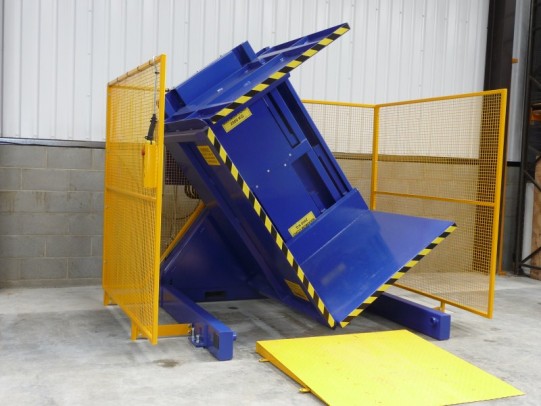
I’ve spent my entire career in the world of heavy-duty machinery, first as an engineer and now as the founder of SHJLPACK. My focus has always been on coil and steel wire packing, but the principles of efficiency, safety, and cost control are universal. I remember visiting a large FMCG client in Pune, India. They were incredibly proud of their production speed, but their shipping department was a scene of controlled chaos. Workers were manually unstacking and restacking goods from in-house pallets to shipping pallets. It was slow, expensive, and damaging to the products. This experience showed me that even the most advanced factories can be held back by one inefficient process. Let's explore why a pallet inverter isn't just a piece of equipment, but a strategic investment for any high-volume plant in India.
How do Pallet Inverters Directly Reduce Operational Costs in Indian FMCG Plants?
Your balance sheet is under constant pressure from fluctuating material costs, labor expenses, and intense market competition. You look for savings everywhere. But you might be overlooking a major source of hidden costs: manual pallet handling. Every time your team manually transfers goods, you're paying for slow labor, risking worker injury, and accepting a certain level of product damage as "the cost of doing business." It feels like a battle you can't win.
A pallet inverter offers a direct and substantial reduction in operational costs by tackling these issues head-on. It automates the transfer process, drastically cutting down on the manual labor hours required. This means fewer workers are needed for this task, and they can be reassigned to more value-added roles. It also virtually eliminates product damage that occurs during manual restacking. Furthermore, it protects your valuable in-house pallets from being lost or damaged in transit, saving you significant replacement costs over time.
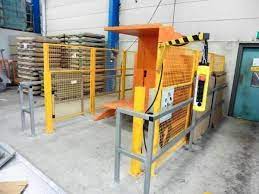
When I was building my own packing machine factory, every single rupee mattered. I learned to analyze every process for hidden inefficiencies. The principles are the same whether you're handling steel coils or boxes of biscuits. The goal is to maximize output while minimizing waste in time, labor, and materials. Let's break down exactly where a pallet inverter saves you money. This isn't just theory; it's a practical analysis of the costs you are incurring right now.
Deconstructing the Cost Savings
The financial argument for a pallet inverter becomes clear when you look at the numbers. It’s not one single saving, but an accumulation of benefits across different areas of your operation.
- Labor Costs: Manual handling is labor-intensive. A team might take 20-30 minutes to transfer a full pallet load. A pallet inverter does the same job in under two minutes with a single operator. This frees up your workforce for other critical tasks like quality control or order fulfillment.
- Product Damage Reduction: Manual handling inevitably leads to dropped boxes, crushed corners, and damaged goods. A pallet inverter handles the entire load as a single, stable block. It gently tilts and transfers the load without manual intervention. This can reduce product damage rates from this specific process by over 95%. For high-value FMCG goods, this saving alone can justify the investment.
- Pallet Management: High-quality in-house pallets (like plastic or durable hardwood) are expensive assets. You don't want them leaving your facility. A pallet inverter allows you to transfer goods onto cheaper, one-way export pallets right before shipping. This protects your valuable pallet fleet from being lost or damaged.
Let's compare the two methods in a typical scenario.
| Metric | Manual Pallet Transfer | Pallet Inverter Transfer | Annual Impact (Example) |
|---|---|---|---|
| Time per Pallet | 20 minutes | 2 minutes | Saves thousands of man-hours |
| Labor Required | 2-3 workers | 1 operator (part-time) | Reduces labor cost by >70% for this task |
| Product Damage Rate | 1-3% | <0.1% | Prevents loss of revenue from unsaleable goods |
| Pallet Loss/Damage | High risk | Minimal risk | Saves thousands in pallet replacement costs |
| Worker Injury Risk | High (back strain, repetitive motion) | Very Low | Reduces insurance claims and lost workdays |
The true cost-effectiveness comes from this combined impact. It’s a solution that pays for itself, often in less than 18 months, depending on your volume. It turns a cost center—your shipping prep area—into a streamlined, efficient part of your production line. This is the kind of practical, high-return investment that smart plant owners in India are making to stay competitive.
Why is a Pallet Inverter a Game-Changer for Throughput in High-Volume Operations?
Your production lines are running at full tilt, producing hundreds of pallets of finished goods every day. But then, everything hits a wall in the dispatch area. A long queue of pallets waits to be transferred for shipping. This bottleneck strangles your entire operation. It doesn't matter how fast you produce if you can't ship your products out the door just as quickly. This delay costs you time, money, and can even damage relationships with distributors who expect on-time delivery.
A pallet inverter is a game-changer for throughput because it eliminates this critical bottleneck. Instead of a slow, manual process that takes many minutes per pallet, an inverter completes the task in 60 to 90 seconds. This incredible speed allows your dispatch area to keep pace with your high-volume production. It ensures a smooth, continuous flow from the production line to the transport truck, dramatically increasing the overall capacity and efficiency of your plant.
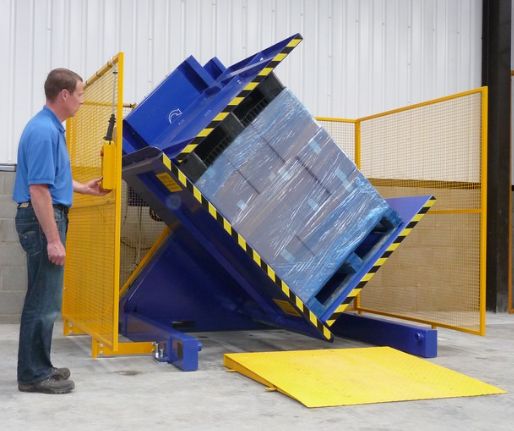
In the steel industry, we measure everything in tons per hour. A delay at any stage, from the furnace to the coiler, has massive financial consequences. I learned early on that your plant's true capacity is determined by its slowest point. It's the same in FMCG. You might have the latest production technology, but if your logistics can't keep up, that technology is being wasted. Upgrading your pallet handling process is not just an operational improvement; it's a strategic move to unlock the full potential of your entire production investment.
Unlocking Your Plant's True Speed
High-volume means high-speed. A pallet inverter is designed to match and even exceed the pace of modern FMCG production lines. Let's analyze how it achieves this and what it means for your overall plant performance.
Cycle Time Reduction
The most direct impact is on cycle time. A manual transfer is a multi-step process: find space, get workers, unstack boxes, restack on a new pallet, wrap the new pallet. A pallet inverter condenses this into a single, automated cycle. The operator places the pallet, pushes a button, and removes the new pallet. The difference is staggering.
| Process Step | Manual Method | Pallet Inverter Method |
|---|---|---|
| Setup | 5 mins (gather team, clear area) | 30 secs (forklift places pallet) |
| Transfer | 15 mins (restacking boxes) | 60 secs (machine rotates and transfers) |
| Finish | 5 mins (final checks, move pallet) | 30 secs (forklift removes pallet) |
| Total Time | ~25 minutes | ~2 minutes |
This means you can process 10-12 times more pallets in the same amount of time. For a plant shipping hundreds of pallets a day, this is the difference between meeting deadlines and falling behind.
Integration with Automation
Modern facilities in India are increasingly automated. Pallet inverters are not just standalone machines; they are designed to be integrated into a larger automated system. You can create a fully automated line where a pallet comes from the production line via a conveyor, enters the inverter, gets transferred, and then moves to an automated stretch wrapper before being staged for pickup. My company, SHJLPACK, specializes in wrapping solutions, and I've seen firsthand how a pallet inverter can perfectly feed a high-speed wrapper. This seamless integration eliminates manual touchpoints, reduces errors, and creates a predictable, high-speed flow that runs 24/7. This is the foundation of a true Industry 4.0 logistics setup.
What Makes Pallet Inverters a Superior Choice Over Manual Handling for Safety and Product Integrity?
Every factory owner worries about two things: the safety of their people and the quality of their products. When you rely on manual labor for heavy tasks like transferring pallet loads, you are constantly managing risk. A single moment of fatigue or a wrong move can lead to a serious back injury for an employee or a full pallet of goods crashing to the floor. The costs of these incidents—from medical bills and insurance hikes to written-off inventory—are enormous and unpredictable.
A pallet inverter is a fundamentally safer and more reliable choice because it removes the human element from the physical strain of the task. The machine bears the full weight of the load, eliminating the risk of ergonomic injuries associated with manual lifting and restacking. It handles the entire pallet load as one secure unit, preventing the kind of product damage that is common when individual boxes are handled. This commitment to safety and quality isn't just good practice; it's good business that protects your people and your profits.
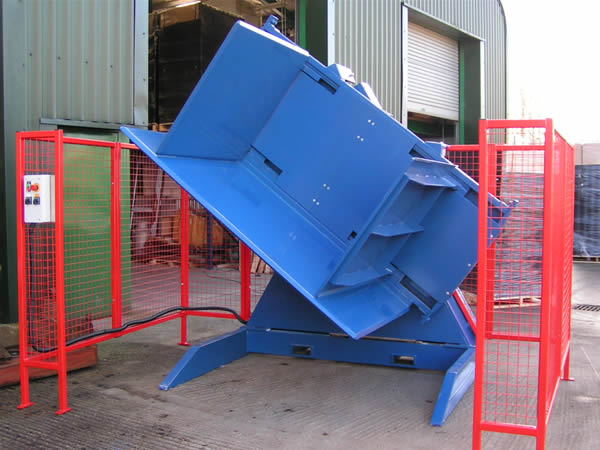
I built my business on the principle of providing robust, reliable solutions. In steel packing, the loads are heavy and unforgiving. Safety is not optional. The same logic applies to any high-volume industry. I feel a personal responsibility for the safety of the equipment I design and sell. I believe that investing in engineering controls, like a pallet inverter, is the most effective way to create a safer work environment. It's a proactive step that shows your employees you value their well-being, which in turn leads to better morale and higher productivity.
Building a Safer, More Reliable Operation
Let's move beyond the general idea of safety and look at the specific ways a pallet inverter improves both workplace safety and product integrity. These are tangible benefits that you will see from day one of implementation.
Enhancing Workplace Ergonomics and Safety
Manual pallet handling is a high-risk activity. The primary dangers are musculoskeletal disorders (MSDs) resulting from repetitive lifting, bending, and twisting.
- Eliminating Manual Lifting: A pallet inverter handles loads that can weigh over 1,500 kg. No human can or should lift that. By automating the transfer, you remove the primary cause of back injuries, which are among the most common and costly workplace injuries in India's industrial sector.
- Reducing Repetitive Strain: Even if individual boxes are not heavy, the repetitive motion of unstacking and restacking hundreds of them per shift leads to chronic injuries in the shoulders, back, and wrists. The inverter performs this repetitive task flawlessly without fatigue or strain.
- Creating a Controlled Environment: The machine operates within a defined, often guarded, space. This reduces the risk of accidents involving forklifts and pedestrians in a congested work area.
| Risk Factor | Manual Handling | Pallet Inverter |
|---|---|---|
| Lifting Hazard | High: Workers lift heavy, awkward boxes. | Eliminated: Machine handles the entire load. |
| Repetitive Motion | High: Constant bending and twisting. | Eliminated: A single automated cycle. |
| Falling Objects | Medium: Unstable stacks can collapse. | Low: Load is clamped securely. |
Preserving Product and Packaging Integrity
Your product's packaging is designed to protect it and present it well to the consumer. Manual handling is its worst enemy.
- Gentle Handling: The inverter uses hydraulic or electric power to apply consistent, even pressure. It then rotates the load smoothly. There are no sudden jolts, drops, or impacts that can crush box corners, tear packaging, or damage the contents.
- Maintaining Stack Pattern: Many FMCG products are stacked in a specific, interlocking pattern for stability. Manual restacking rarely replicates this perfectly, leading to unstable pallets. The inverter transfers the entire stack as is, preserving the original, stable pattern created at the factory. This ensures the pallet is safe for transport and storage. This integrity is critical, especially for products being shipped long distances from plants in India to markets across the world.
How Can Integrating a Pallet Inverter Drive Broader Supply Chain Efficiency in India?
You've optimized your production line and your dispatch speed. But what about the bigger picture? Your supply chain is a complex network that extends far beyond your factory walls. You face challenges with pallet quality, compliance with international shipping regulations, and the high cost of transportation. Simply moving goods faster within your plant is not enough. You need solutions that create efficiency across the entire chain.
Integrating a pallet inverter is a strategic move that drives broader supply chain efficiency. It acts as a critical control point, allowing you to manage pallet quality and type effectively. You can transfer goods from high-quality internal pallets to low-cost, one-way export pallets, immediately cutting costs. It also ensures you can easily switch to heat-treated ISPM 15 compliant pallets for international shipments, avoiding costly delays at customs. This single piece of equipment gives you the flexibility to optimize your logistics for cost, compliance, and efficiency.
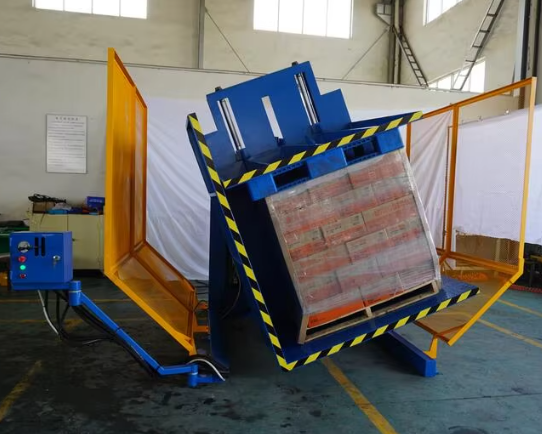
As a business owner, I've learned that the best investments are the ones that solve multiple problems at once. When I provide a total solution for wrapping, it's not just about the machine; it's about how that machine improves my client's entire process. A pallet inverter is the same. It’s not just a transfer device. It's a tool that gives you control over a key part of your logistics, with benefits that reach all the way to your end customer. This is how you build a resilient and cost-effective supply chain, a necessity for any major player in the Indian market.
From Factory Floor to Global Market
A pallet inverter bridges the gap between your internal manufacturing process and the external supply chain. Its impact is felt far beyond the dispatch bay.
Mastering Pallet Logistics and Costs
In a high-volume operation, pallets are a significant operational expense. An inverter gives you the power to manage this cost strategically.
- The Two-Pallet System: You can implement a "two-pallet" strategy. You invest in high-quality, durable plastic or metal pallets for internal use within your plant. These are expensive but last for years. For outgoing shipments, you use the inverter to transfer goods onto the cheapest possible wooden or presswood pallets. You don't have to worry about getting these cheap pallets back. This system drastically reduces the money you lose on non-returned or damaged shipping pallets.
- Quality Control Gateway: The inverter also serves as a quality checkpoint. You can use it to remove damaged or broken pallets from your internal loop before they cause a problem on an automated conveyor line or in high-bay racking. You can also inspect incoming goods on supplier pallets and transfer them to your high-quality internal pallets upon receipt.
Ensuring Seamless International Compliance
For Indian FMCG companies looking to export, ISPM 15 is a non-negotiable regulation. It requires that all solid wood packaging be heat-treated or fumigated to prevent the spread of pests.
| Challenge | Solution with Pallet Inverter | Benefit |
|---|---|---|
| Export Compliance | Easily transfer goods from non-compliant internal pallets to ISPM 15 stamped pallets just before shipping. | Avoids customs rejection, fines, and delays. Ensures smooth export process. |
| Supplier Pallets | Receive goods on any type of pallet and immediately transfer them to your standardized internal pallets. | Maintains a clean, uniform, and high-quality pallet pool within your facility. |
| Hygiene Standards | Transfer goods from wooden pallets to hygienic plastic pallets for entry into cleanroom or food-grade production areas. | Meets strict industry and government hygiene regulations. |
By making pallet exchange a quick and simple process, the inverter gives you the agility to meet any requirement—be it cost, quality, or compliance. It transforms pallets from a logistical headache into a flexible tool for optimizing your entire supply chain.
Conclusion
Ultimately, pallet inverters offer a powerful, cost-effective solution for India's high-volume FMCG plants. They cut costs, boost speed, improve safety, and provide critical supply chain flexibility.

